I am retrieving a JSON object graph via ASP.NET Web API. I'm trying to access the properties from a child entity. When looking at the browser's console, however, it is showing a reference ($ref) to the object, instead of serializing the properties of that object. How do I get access to these properties?
ANGULAR JS VIEW
<table infinite-scroll='tF.loadMore()' infinite-scroll-disabled='tF.isBusy' infinite-scroll-distance='3' class="responsive">
<thead>
<tr>
<th>FIELD 1</th>
<th>FIELD 2</th>
<th>FIELD 3</th>
<th>FIELD 4</th>
<th>FIELD 5</th>
</tr>
</thead>
<tbody>
<tr ng-repeat="item in tF.items | filter:searchFilter">
<td>{{item.CompanyDomainModel.CompanyName}}</td>
<td>{{item.RatingDomainModel.RatingValue}}</td>
<td>{{item.Views}}</td>
<td>{{item.Clicks}}</td>
<td>{{item.EmailSent}}</td>
</tr>
</tbody>
<tfoot ng-show='tF.isBusy'>
<tr>
<td colspan="9"><spinner show="tF.isBusy" /><span class="bold">{{tF.status}}</span> </td>
</tr>
</tfoot>
</table>
SERVICE
public ICollection<CompanyStatDomainModel> GetRecordsByPageSize(int page) {
const int pgeSize = 20;
var result = _companyStatRepo
.AllIncluding(c => c.CompanyDomainModel, c => c.RatingDomainModel)
.OrderBy(c => c.CompanyStatId)
.Skip(page * pgeSize)
.Take(pgeSize)
.ToList();
return result;
}
ENDPOINT
IHttpActionResult GetRecordsByPageSize(int page) {
var companyStatService = new CompanyStatService();
return Ok(companyStatService.GetRecordsByPageSize(page));
}
RATING DOMAIN MODEL
public class RatingDomainModel : IObjectWithState
{
[Key, DatabaseGenerated(DatabaseGeneratedOption.Identity)]
[DataMember]
public int RatingId { get; set; }
[DataMember]
public int CompanyId { get; set; }
[DataMember]
public int UserId { get; set; }
[DataMember]
public int RatingValue { get; set; }
[DataMember]
public DateTime CreatedDate { get; set; }
//[ForeignKey("UserId")]
[DataMember]
public virtual UserDomainModel UserDomainModel { get; set; }
//[ForeignKey("CompanyId")]
[DataMember]
public virtual CompanyDomainModel CompanyDomainModel { get; set; }
[DataMember]
public virtual ICollection<CompanyStatDomainModel> CompanyStatDomainModels { get; set; }
[NotMapped]
public Common.DataObject.State state { get; set; }
[NotMapped]
public bool InDb
{
get { return this.RatingId != default(int); }
}
public object PersistenceEntityId
{
get { return this.RatingId; }
}
}
OUTPUT
